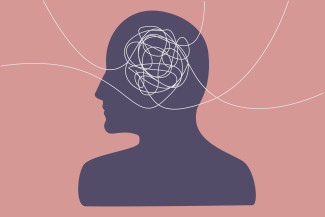
Johns Hopkins UniversityEst. 1876
America’s First Research University
For the Caregivers of Someone with Depression

Mood disorders are considered a family illness for many reasons. Dealing with depression or bipolar disorder in a family – which is the focus of my new book, Helping Others with Depression – can be difficult and taxing to all members, often causing both physical and mental exhaustion. There is constant worry and concern for the wellbeing of your loved one, and a sense of feeling powerless to make things better. The impact extends to the entire family: a spouse or significant other, children, parents, and siblings may experience changes in family life and routine, personal time and space, finances, level of stress, relationships, and other things.
Supporting someone who has a mental illness requires extra patience, persistence, and courage on your part. You may find it challenging to keep giving of yourself, offering love, compassion, and support when it feels that you are receiving little in return. Perhaps you fear that you may have said or done something to cause your family member’s distress. Probably not. Try to avoid getting caught up in the whirlwind of his or her negative, distorted, and sometimes chaotic thinking and behavior. While you may feel (undeserved) personal attacks directed at you, be strong. Don’t try to find logical, believable reasons for this thinking or behavior – it comes from the illness, not your loved one.
Sometimes caregiving can lead to your own burnout – symptoms and emotions that come from the stress of caring for someone. It’s a kind of fatigue; the sense of having reached the limits of your endurance and ability to cope. Burnout is the result of too many demands on your strength, resources, time, and energy, going beyond your ability to deal with it. It’s a fairly common experience among caregivers.
How do you protect against burnout and keep from losing yourself in your family member’s illness? The best way is to take time to monitor and care for yourself. This includes getting regular sleep, a healthy diet, daily physical exercise, and keeping up with your social contacts. Do your best to tend to your physical, mental, and emotional needs and aim for balance in your life. See that your usual daily routines and those of the family are maintained and protected and don’t let anything interfere with that. Take steps to provide emotional outlets and supports in place for yourself and other family members.

Engage as much support for yourself as possible from close friends and family. You cannot do this alone. In the midst of a loved one’s illness, it may feel selfish to consider your own wants and needs, doing what increases your own self-esteem and pleasure (hobbies, interests, skills, or volunteer work). Yet these are what make your life whole, rewarding, and rich. Paying attention to your own needs does not mean you are ignoring your loved one. Instead, it enables you to be a more available and valuable support person.
Try to remember that you’re dealing with a biologically based illness of the mind and body that is treatable. Learn all you can about it from reliable sources. Be an informed consumer: learn the facts, check the mental health provider’s credentials, and consider the evidence on suggested treatment options. Ask your PCP if you have any questions. The more you learn, the better you will be able to cope with your loved one’s illness and help them more effectively.
Some caregivers recommend that it’s essential to pace yourself when you have a loved one struggling with a mental illness. Pacing yourself means doing only what you can realistically do, in reasonable steps and small bites with periodic breathers, and that you try not to over-commit. Recognize and accept your own limitations without feeling guilty – you can’t do or be everything for everybody. Although it’s hard for many of us, learn to say “no” on occasion and remind yourself that you cannot help your loved one if you are stretched too thin.
Don’t be afraid to ask for professional help for yourself! Some caregivers find that brief supportive psychotherapy for themselves is beneficial during these times. This could be individual therapy or it might include joining a support group specifically for friends and families of those who have depression – all done virtually during the pandemic. You can find these groups within the National Alliance on Mental Illness (NAMI) and the Depression and Bipolar Support Alliance (DBSA), national organizations with local chapters that have small support groups specifically for family members of those who have a mood disorder. There you will speak with others like yourself who find themselves in a similar situation with similar problems.
Susan J. Noonan, MD, MPH, a part-time Certified Peer Specialist at McLean Hospital, is a consultant to Massachusetts General Hospital and CliGnosis, Inc. She is the author of Helping Others with Depression: Words to Say, Things to Do, Managing Your Depression: What You Can Do to Feel Better, When Someone You Know Has Depression: Words to Say and Things to Do, and Take Control of Your Depression: Strategies to Feel Better Now.



